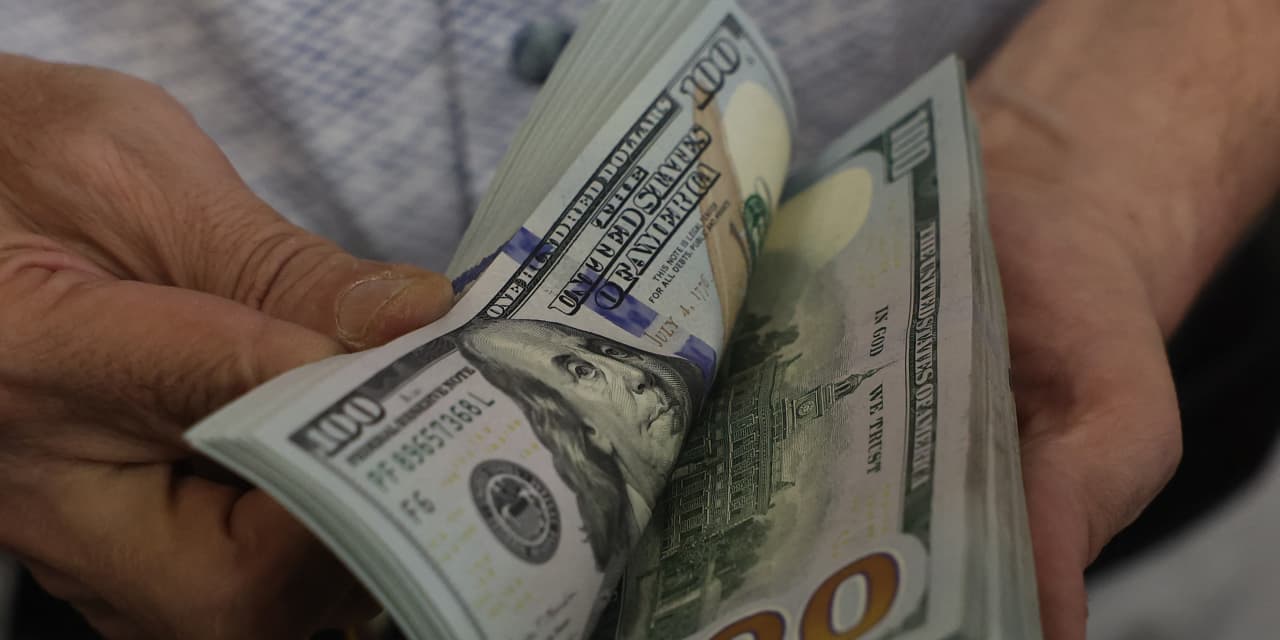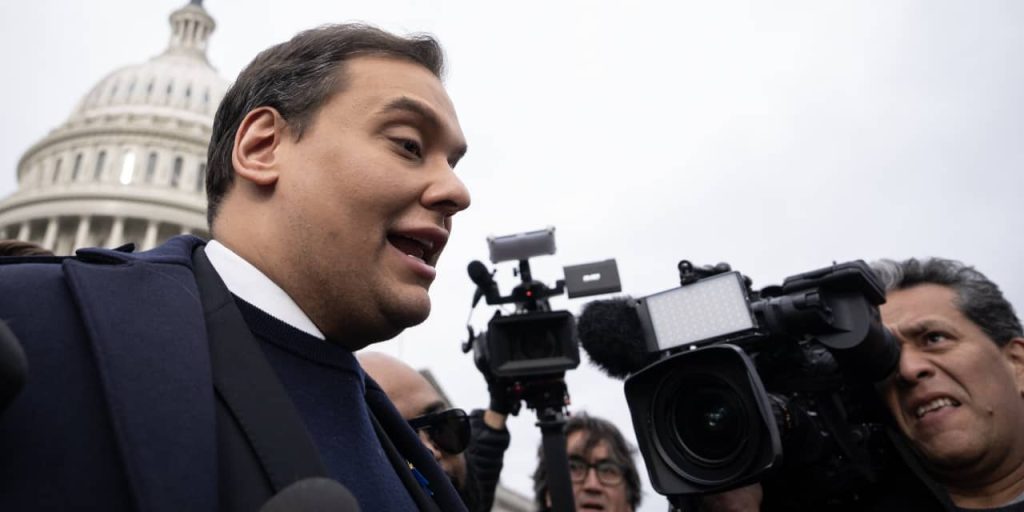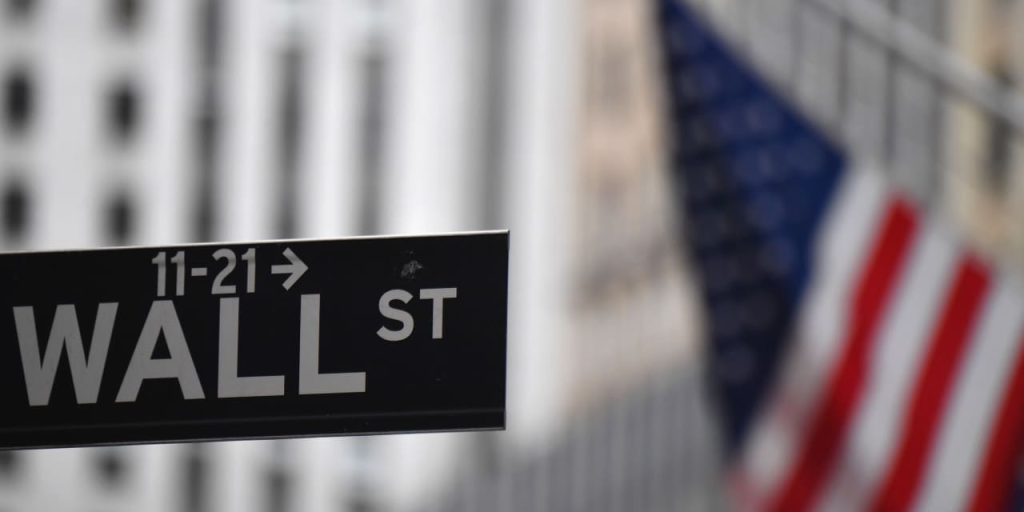The Federal Reserve’s fastest and biggest interest-rate hike campaign, begun in early 2022, pushed returns for money-market funds and other cash-like investments north of 5%. For investors buffeted by volatile stock and bond markets, cash has been hard to resist.
“Clients have been loving it this year,” says Rebecca Boyd, wealth advisor at Frost Investment Services. “I think there’s more cash on the sidelines now than we’ve ever had.”
Reflecting U.S. investors’ 2023 mind-set, there were net outflows of $131.9 billion from U.S. equity funds this year, and inflows of $895.1 billion into U.S. money-market funds in the same period, according to LSEG Data & Analytics. Total money-market fund assets hit $5.9 trillion for the week ended Dec. 6, a 24% increase from the end of 2022, according to the Investment Company Institute..
With the yield curve inverted and longer-term bonds paying less than shorter-term bonds, investors don’t have much incentive to go further out on the maturity spectrum. They can get better yields on the short end, with little interest rate risk.
Yet now that the Fed has suggested, in its last announcement of 2023, that it expects to begin cutting rates next year, cash will stop being golden.
There are several reasons why staying in cash will cost you. For starters, having your money in cash instead of bonds means you will miss out on capital gains when interest rates drop, pushing bond prices up. Second is reinvestment risk, the risk that you will have to reinvest a maturing short-term security at a lower rate in the future. But the biggest reason for long-term investors is that yields on bonds tend to outpace yields on cash over long time periods.
“Cash is not king for medium- or long-term investors,” says Adam Hetts, global head of multi-asset at Janus Henderson. “Cash is always a necessary evil for very short-term needs. But for longer term needs, longer than 1-2 years out, that’s where you can use longer duration fixed income.”
Even if you thought the economy was going into recession starting tomorrow and put all your money in cash yielding 5%, you likely wouldn’t beat a balanced 60/40 portfolio of stocks and bonds. Historically, cash returns barely half of what a typical 60/40 portfolio would return from the start of a recession through the 12 months of recovery, according to Hetts’ analysis. “There’s just a huge cost of being in cash,” he says.
The probability that cash outperforms longer-duration bonds diminishes as an investor’s time horizon increases. And after peak interest rates—where we appear to be at now—cash has tended to lag longer-duration Treasuries, according to Vanguard.
“The longer the time frame you move out, historically, the higher probability that cash underperforms longer-term bonds, and the magnitude of underperformance is also greater,” says Chris Tidmore, senior manager in Vanguard’s Investment Advisor Research Center.
Fed clues
Bernstein Private Wealth Management found that yields start to decline around 6 to 9 months in advance of the Fed actually easing rates. “If you believe us that the Fed will cut rates for the first time in the summer of 2024, back up 9 months…and you would have moved out of money markets a couple months ago,” says Matthew Palazzolo, senior investment strategist at Bernstein Private Wealth Management.
Another reason to abandon cash is reinvestment risk, now more of a risk than it was six, nine or 12 months ago, says Palazzolo. “Back then we had clear visibility that the Fed was going to keep interest rates at those higher levels for a sufficient amount of time,” he says. As we head into 2024, evidence the economy is slowing is more apparent, and the risk that the Fed starts to cut rates is greater now.
“Reinvestment risk for investors sitting in cash-like products is certainly real, and part of the reason we’ve been advocating moving out of cash and into intermediate-term bonds,” he says.
For the short term
Certainly, holding cash is important for short-term needs—emergencies, unplanned expenses, coming college tuition bills. Boyd says. Frost advises clients to limit cash to the 3% to 5% of their portfolio, unless the are in the retirement income distribution phase, in which case that range could be higher.
Kathy Carey, director of research at Baird’s Private Wealth Management group, says the firm typically recommends about 2% to 3% of a portfolio in cash. For the moment, at least, the shorter end of the yield curve is still higher than the 10-year bond, so “I don’t think there needs to be a mad dash out of short-term instruments,” says Carey.
Moving excess cash
Palazzolo is recommending clients first reallocate any excess cash into their long-term strategic allocation. But for those leery of investing in stocks ahead of an economic slowdown, he says moving further out on the risk spectrum into bonds, specifically intermediate duration high-grade fixed income, whose yields are 4% or higher, is a sensible approach.
“There’s potential for collecting that yield over the next year, but also getting capital appreciation if yields fall and prices go up,” he says. “We think it’s likely investors in high-quality bonds will outearn money-market funds again in 2024 after having done so in 2023.”
For investors sitting in cash, waiting to get closer to a Fed rate cut and then trying to time the rotation back into longer-duration bonds usually doesn’t work out.
“If you wait for the Fed to cut rates, you lose the majority of returns,” says Hetts.
Write to [email protected]
Read the full article here







